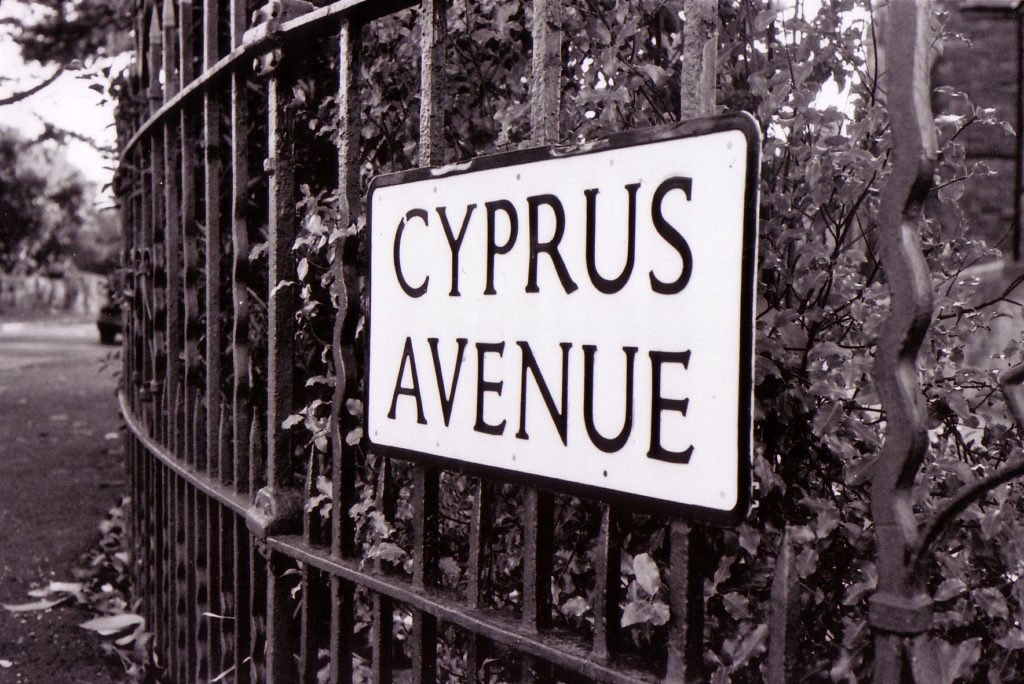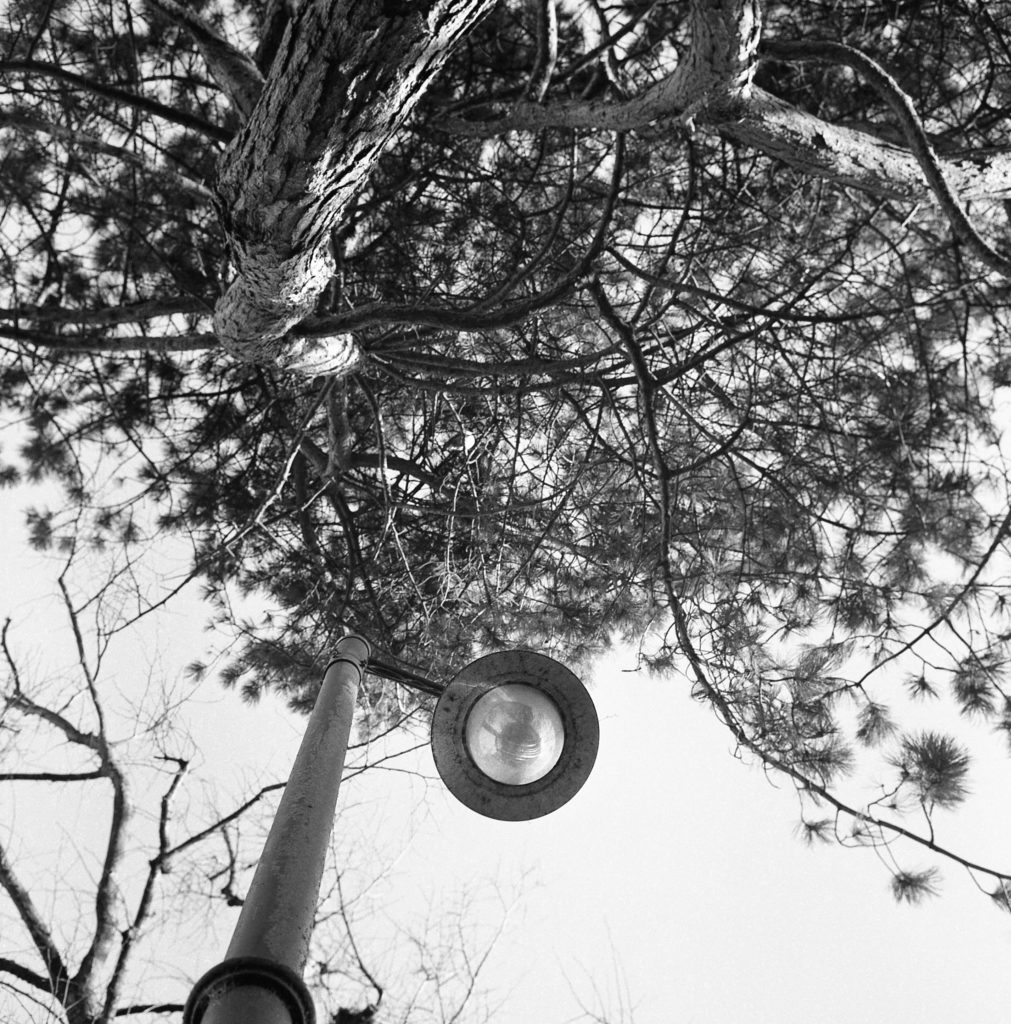An extract from Stuart Bailie’s ‘75 Van Songs’, which celebrates the work of Van Morrison in a milestone year.

Cyprus Avenue is one of the vital postcodes in popular music. It is our Penny Lane, our Strawberry Fields, our Waterloo Sunset. It has outlasted a moment in the 60s and it continues to resonate. The particulars belong to Van Morrison and while it is dense with his own meaning and suggestion, it invites each listener to find their personal aspect in the trees and the drama of Belfast, BT5.
The Avenue is a central motif in Van’s work. It features in at least six of his songs and much of the time it gives him rapture and intense recall. On one level, this is a response to the actual location with its 84 trees, its wide thoroughfare and the mansions of red brick and sandstone.
In a map of 1835, this area is sparsely populated, save for a big house called Fair View. A little later, the Bloomfield Land & Building Company started selling off leases. By 1895, the trees of Cyprus Avenue are in place, plus a dozen detached houses. An unknown planner had arranged for this part of the city to have a spectacular boulevard, aspiring to the Parisian Haussmann style. The speed of development ensured a coherent look to the houses: three-storey, bay windows, wrought-iron railings and gates, mostly detached and set back. Some of the homes had an outhouse at the rear for their pony traps. The Avenue was designed to impress.
The trees include Corsican Pine, Lime, Beech, Sycamore and Maple. It is a mixture of deciduous and coniferous. There is a green presence in both summer and winter. Cyprus Avenue is the most densely tree-populated street in Northern Ireland. The avenue is now a conservation area and no road works are permitted to interfere with the tree roots.
The name Cyprus Avenue may be a reference to the island. Britain took on the administration of Cyprus from the Ottoman Empire in 1878. Yet the tree connection also seems plausible. Over the years, many writers have called it Cypress Avenue. Interestingly, there is a location called Sagimore Gardens nearby. Local folklore says this this was supposed to read Sycamore, but a rural worker from the building firm was sent to the Land Registry office and his pronunciation was registered phonetically. With this in mind, Cyprus may actually have been intended as Cypress.
Van Morrison talked about his personal topography when he appeared at the Lyric Theatre on 5 January 2015. The occasion was the publication of Lit Up Inside, the selected lyrics, by Faber & Faber. In conversation with Eamonn Hughes, Van referred to Bloomfield as ‘a Blakean micro-cosmos’.
William Blake said he experienced his first vision by Dulwich Hill in Peckham Rye. He was nine when he encountered an oak – ‘a tree filled with angels, bright angelic wings bespangling every bough like stars’. Thereafter, he communed with the spirit of his dead brother, with ancient artists and philosophers. He saw angels walking with the haymakers in the morning and his mother was mortified when he said he had been with the Prophet Ezekiel ‘under a tree in the fields’. He conversed with the Spiritual Sun on Primrose Hill. His wife Catherine said, ‘I have very little of Mr. Blake’s company. He is always in paradise.’

‘Cyprus Avenue’ is central to the Astral Weeks album. In literal terms, not much happens. There’s a guy and a girl and a bunch of intense feelings. But in a Blakean sense, it’s all going on. Van experiences an epiphany there, leaving him conquered in a car seat. He becomes aware of each individual leaf falling. He hears snatches of songs, like Hank Williams’ ‘Mansion on the Hill’ and Elvis, tongue-tied on ‘All Shook Up’.
The singer is only yards away from the North Road Railway Bridge. But the line closed down in 1950, the steel rims are immobile. Still, the singer is aware of those phantom engines and the lonesome old voices, reminding him of Jimmie Rodgers, the tubercular singing brakeman. This disused cutting became the domain of teenagers and their bottles of wine, and the narrator thinks about this option for a moment.
But instead, he chances upon the girl and he is enthralled. He imagines the girl in a carriage, pulled by six white horses. Ominously, this suggests a funeral parade, an echo of songs like ‘See That My Grave is Kept Clean’ and ‘When the Chariot Comes’. But as the song fades and the exultation tapers off, he insists that the love will sustain in perpetuity. Perhaps there is
consolation way up in the Heaven, promised in the biblical line from John 14:2:
In my Father’s house are many mansions: if it were not so, I would have told
you. I go to prepare a place for you.
On 31 August 2015, Van played on the Avenue, on a specially constructed stage. It was the occasion of his 70th birthday. He was feted by the residents, by the city, by the international arrivals of so many Vanatics in a shared, generous event. The Avenue knew his name and the poor boy from the misty hollow, down the road, had emphatically found a home on high.
*
‘75 Van Songs’ is out now. Order a copy here (£14.99). You can read a previous extract here, and follow Stuart on Twitter here.